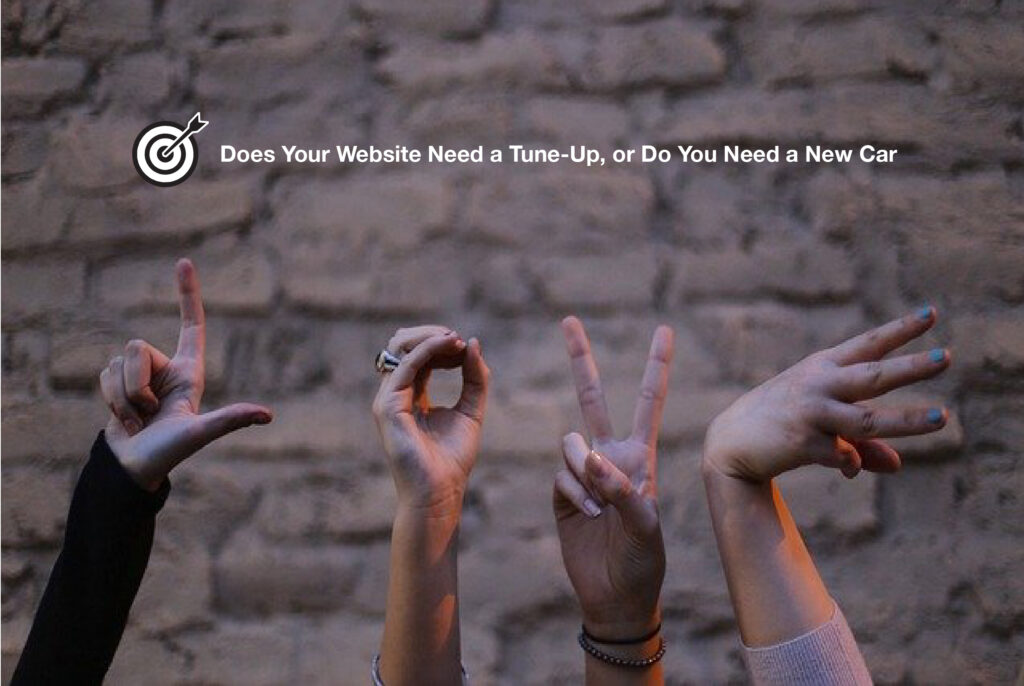Well, not literally a new car, but maybe a new website. Just as you maintain your vehicle, your website requires regular tune-ups. And then, of course, needs change, children leave home, and you’re searching for a new car, smaller and sportier to reflect your current situation. The same applies for your website. Even with consistent tune-ups, your business evolves and technology changes, meaning a totally new website may be in order.
How do you decide when to tune-up and when to start afresh? There are seven elements to consider:
- Customer Journey: If your website user experience is poor – pages take too long to load, it’s difficult to navigate and there’s an absence of engaging, fresh content, it’s a sign that you haven’t prioritised your customer journey. Make small tweaks to correct these issues, until you can no longer.
- Sales Funnel: You might be perfectly satisfied with your website’s conversion rate, then no need to worry. But, if you think the traffic isn’t high enough, and you’re missing out on valuable leads and conversions, then a redesign (mindful of your sales strategy), and new tools can make the difference. You might also notice a high abandon rate, this is another red flag to spend time to understand and reverse.
- Responsiveness: While it varies by industry and your particular customer demographic, close to half of website traffic comes via mobile devices. And with Google rankings now based on the mobile version of a website, rather than the desktop one, it’s even more important to be sure the mobile experience isn’t just a retrofit.
- Industry Standard: How does your site stack up when compared to your competitors? Does it look outdated, has it been more than five years since you launched your site? Have you been consistently tuning it up, adding fresh images and great content, and now it’s getting increasingly difficult to do so? New platforms and tools can make all the difference, it might be time.
- Customer Engagement: Interlocking with the customer journey is ensuring your website has engagement mechanisms. Is it just a static digital brochure or does it come alive with appealing content and ways to connect for dialogue, are there lead magnets that reinforce your messaging, stamp your authority and demonstrate support for your customers and your industry.
- Streamline Operations: Could your website streamline some standard operating procedures? Are there laborious manual processes you can eliminate with a new tool or widget added to your website? For example, do you have stockists you send printed or pdf emails to with new product announcements/price lists? Could you do that by upgrading your website to include a B2B shop front and employing a CRM with automations to connect with and nurture new, as well as, established customers?
- SEO: Applicable to your current site or a new build, is to be sure SEO best practice is accommodated. There are so many elements to the machinery of optimising for best performance, here are some of the main ones to review. By being strategic about keywords you’re helping Google do its job. Including key phrases naturally in your content will achieve this and, if it can’t appear in the site copy, be sure to load longtail keyword heavy blog content regularly. Don’t overlook the value of localising your business, you will benefit from customer searches who need immediate results. Check your page meta tags, they’re the ones you see at the top of the page in the browser bar, they should be descriptive, keyword rich signposts. Insert relevant internal links (those are the ones that go to other pages on your site) on the most popular pages. These will capitalise on the traffic and help users find applicable information, while boosting what’s called link juice – where the value of one page leaks, like juice, to another page.
I just realised, I’m only touching the edges of SEO recommendations here. We really need a completely separate blog, there’s just so much more to talk about.
Sources: exposure.com, hubspot.com


